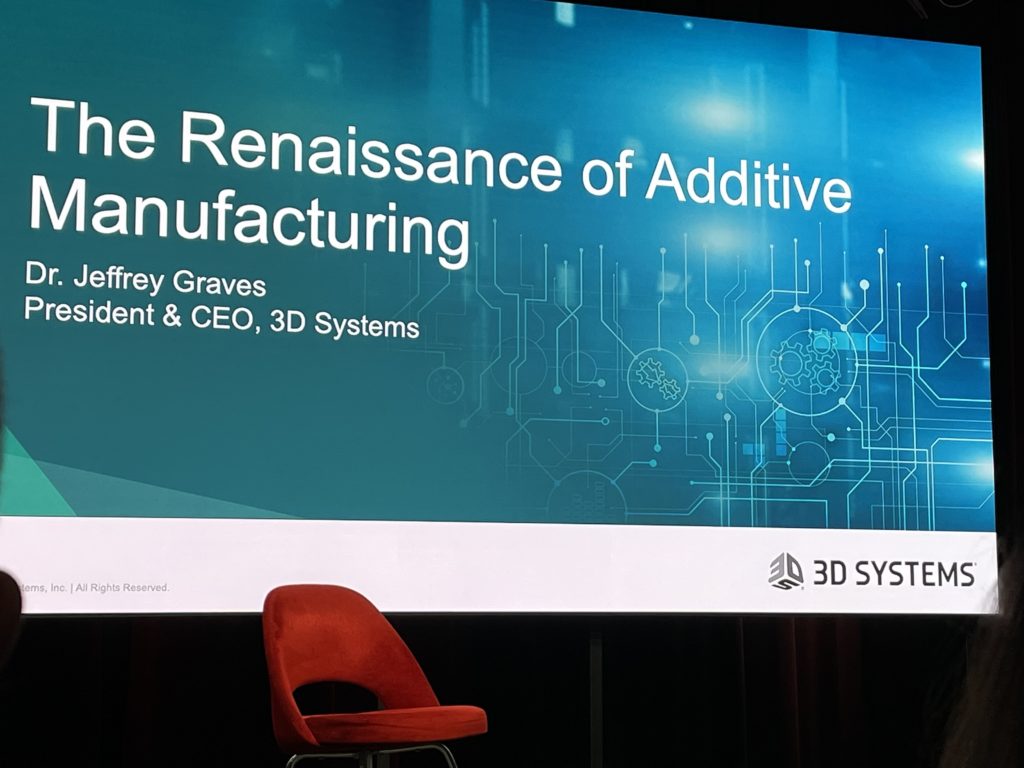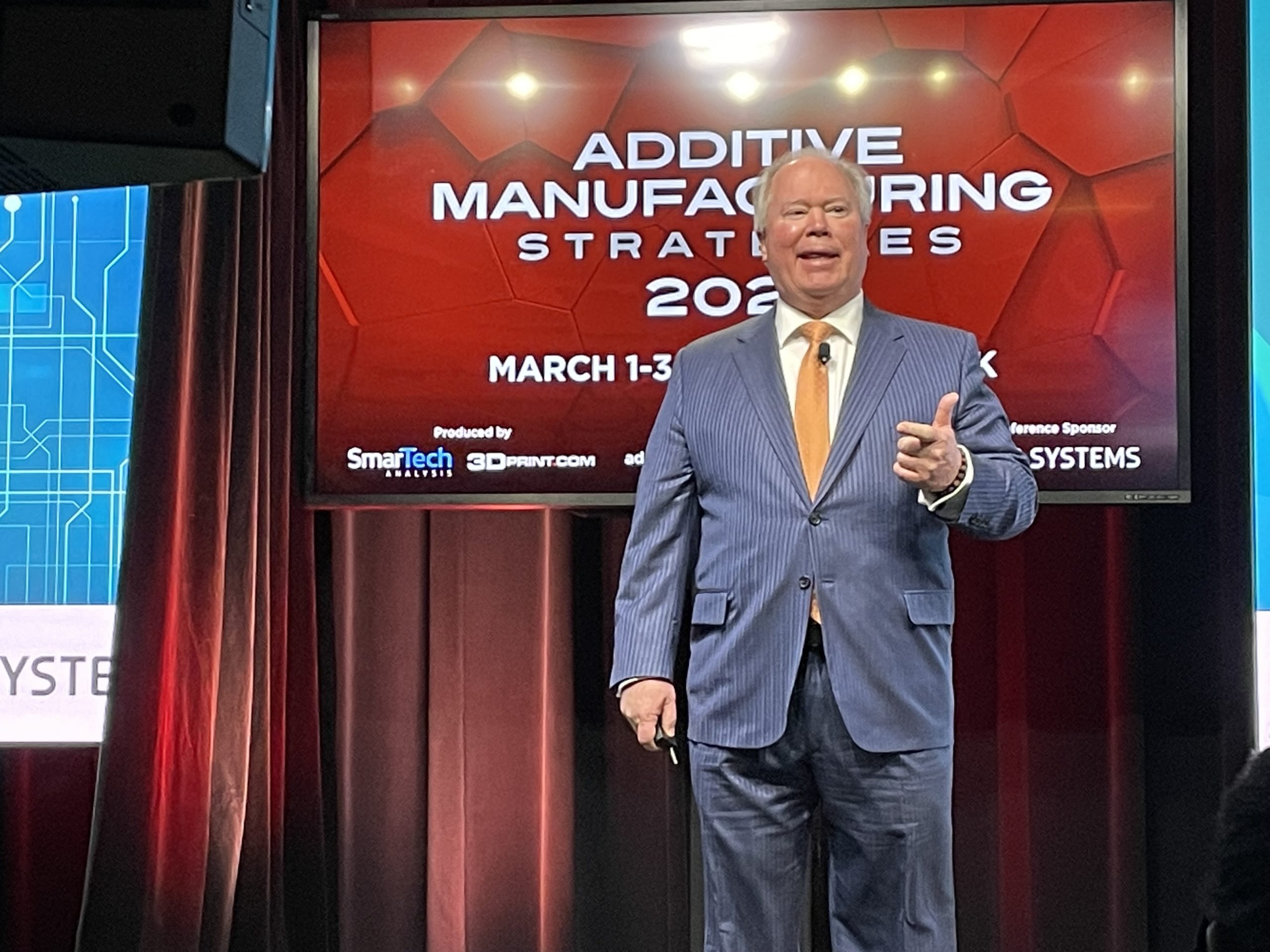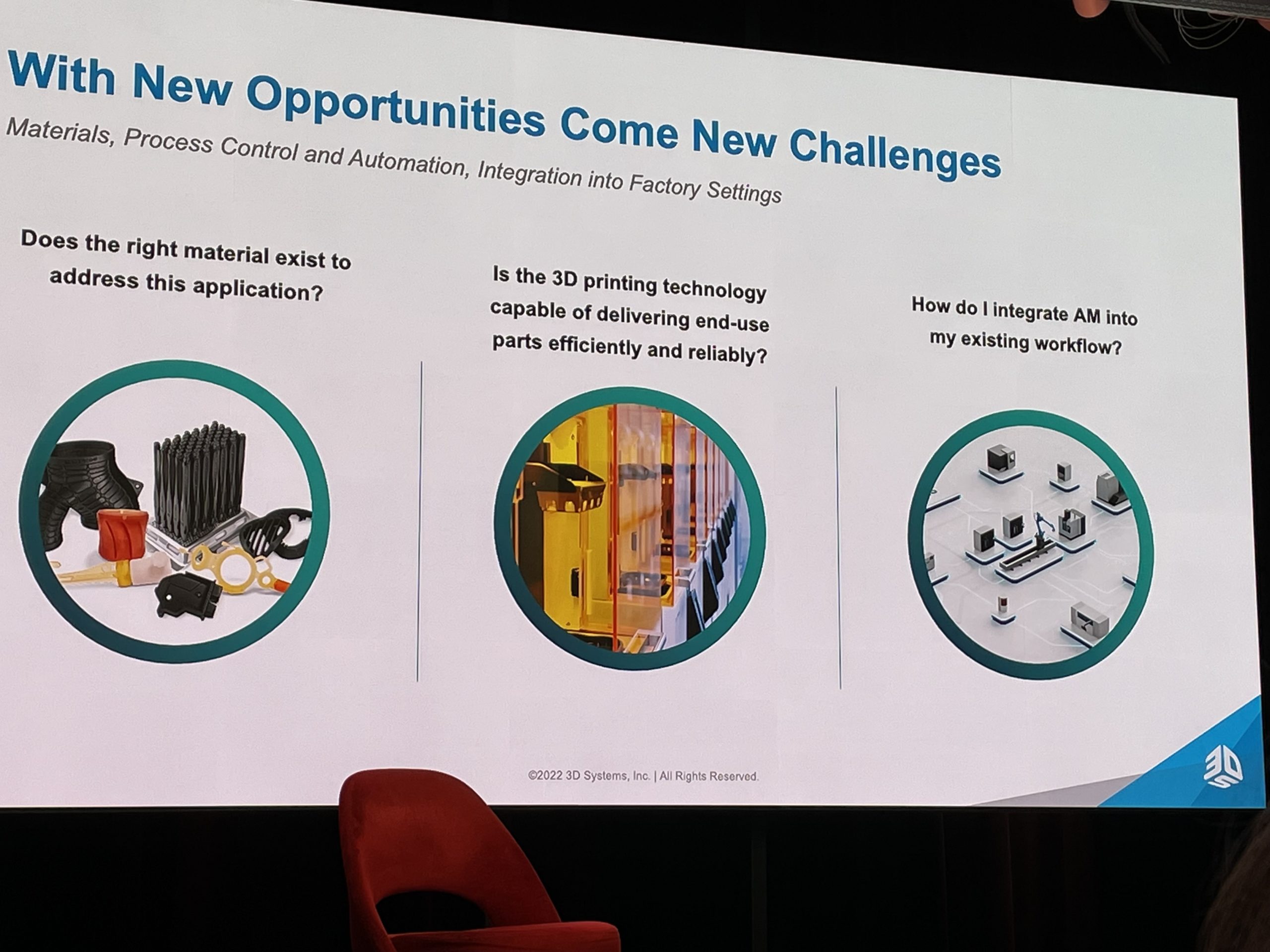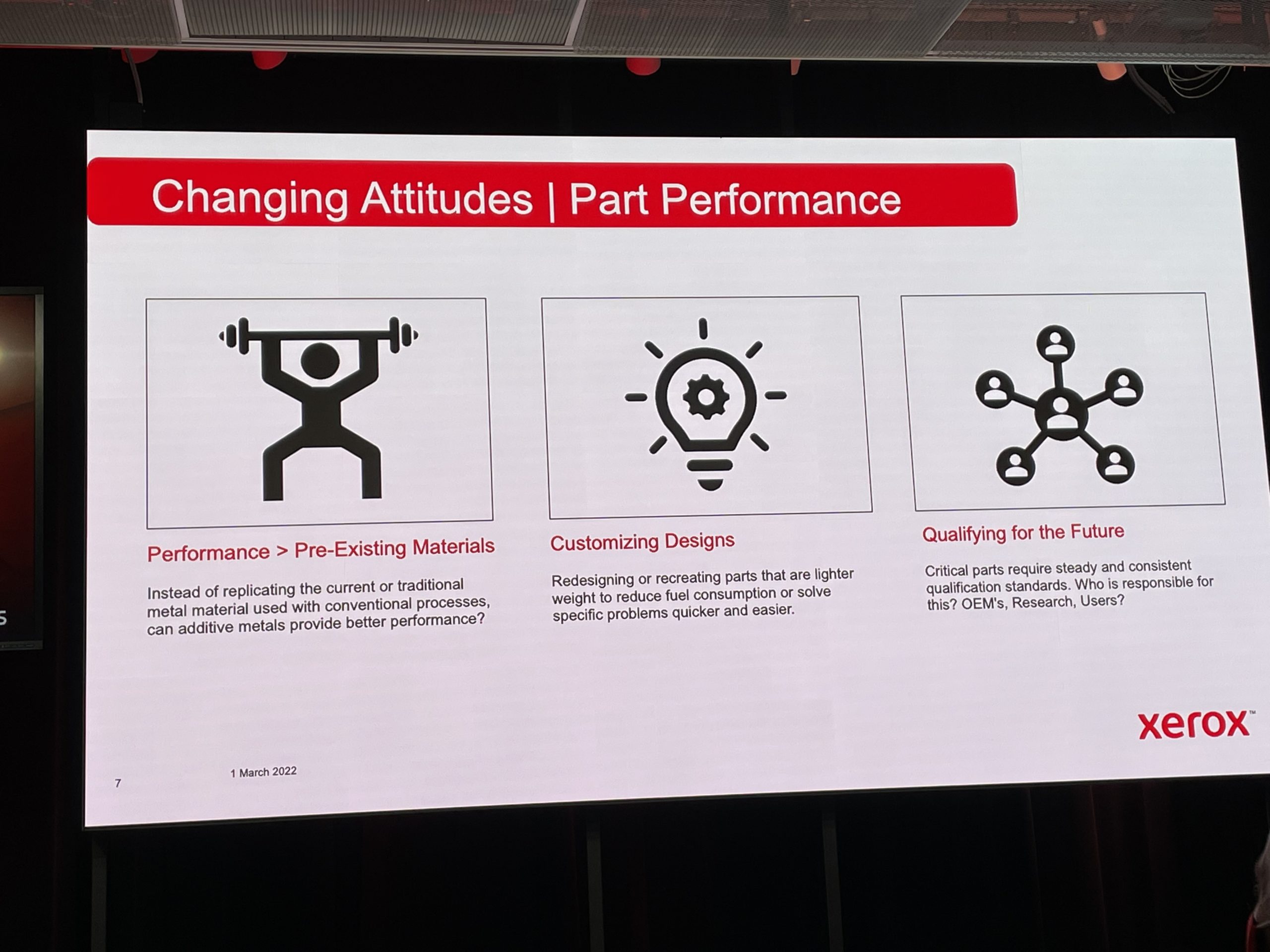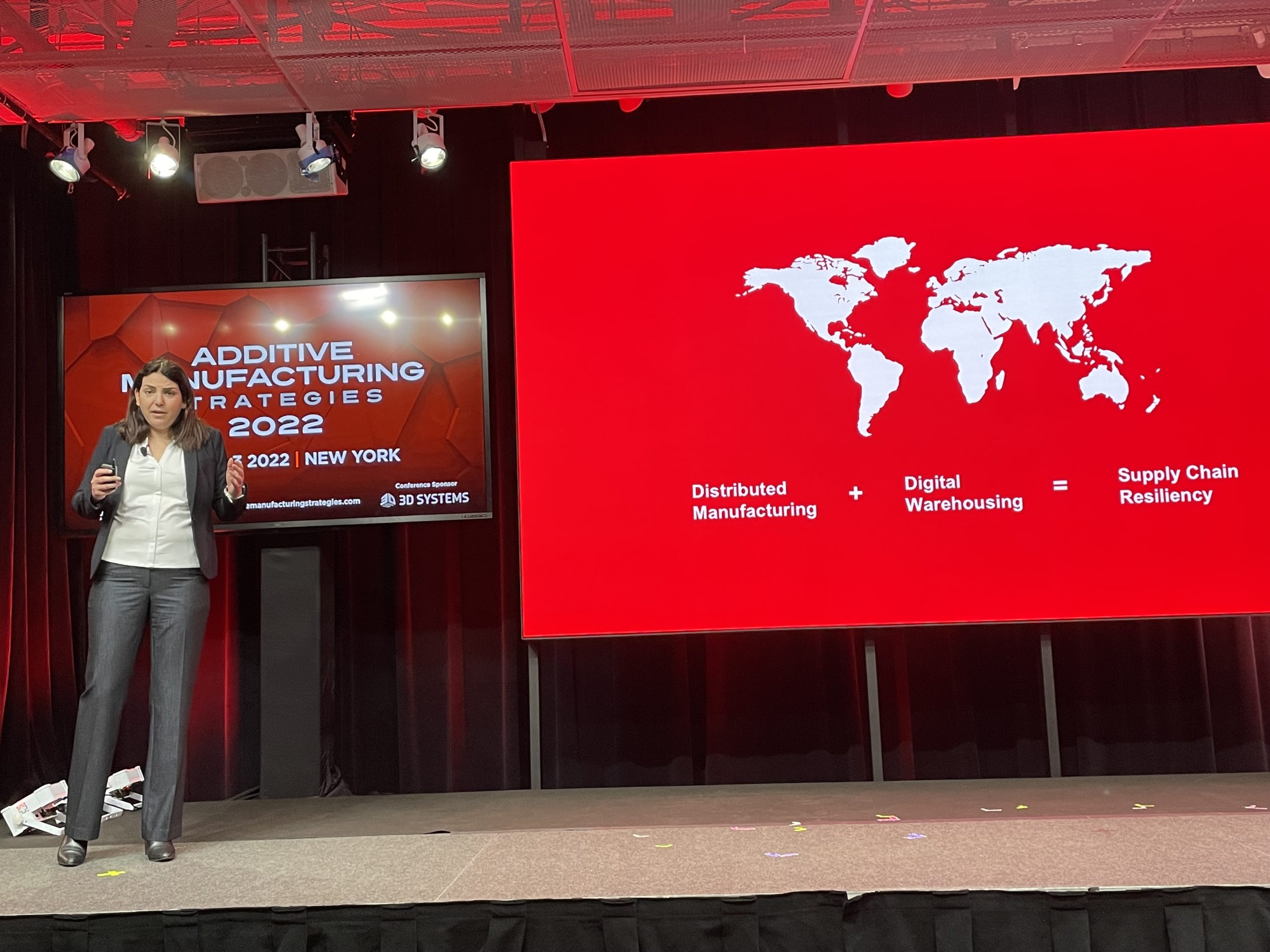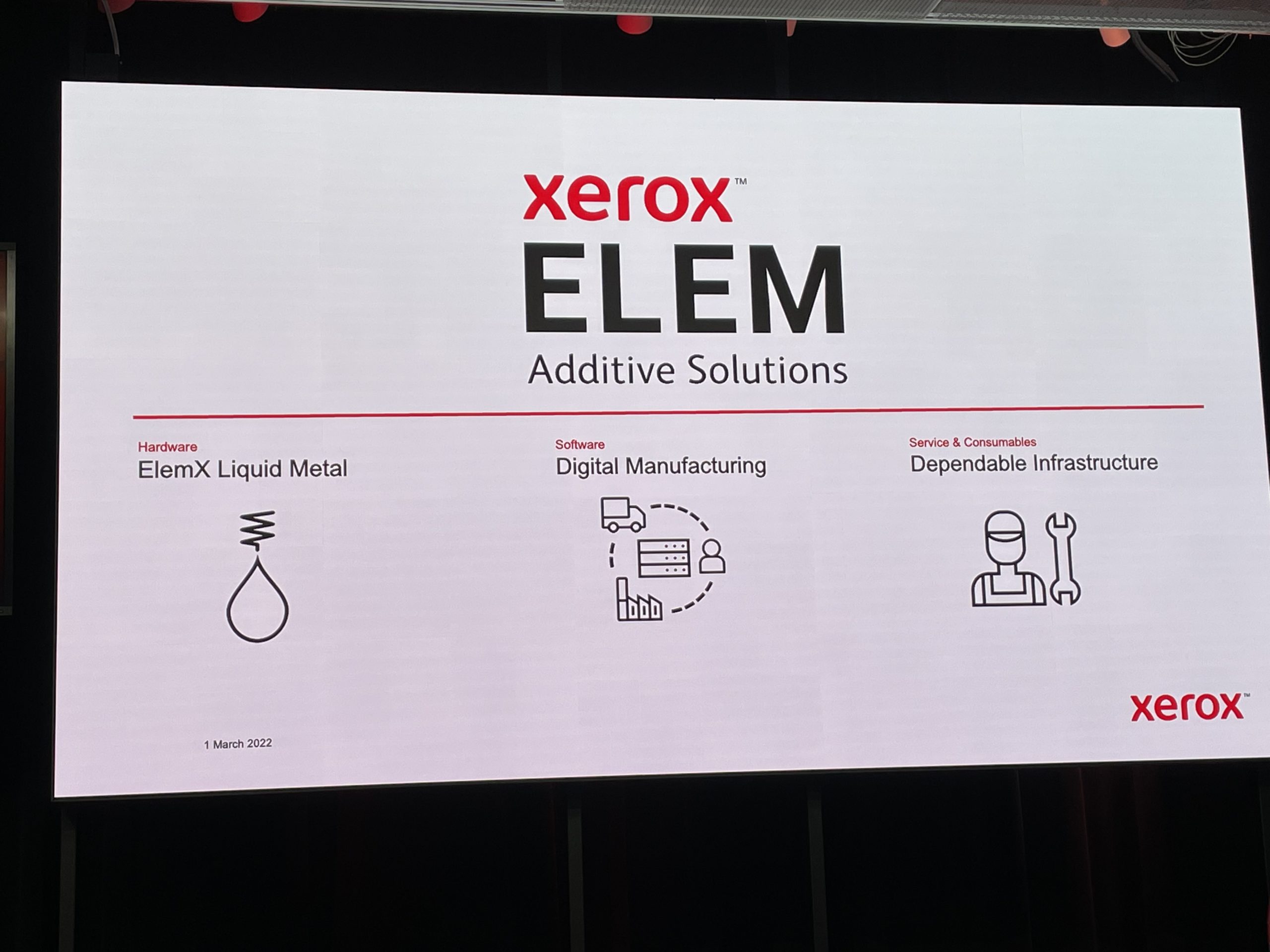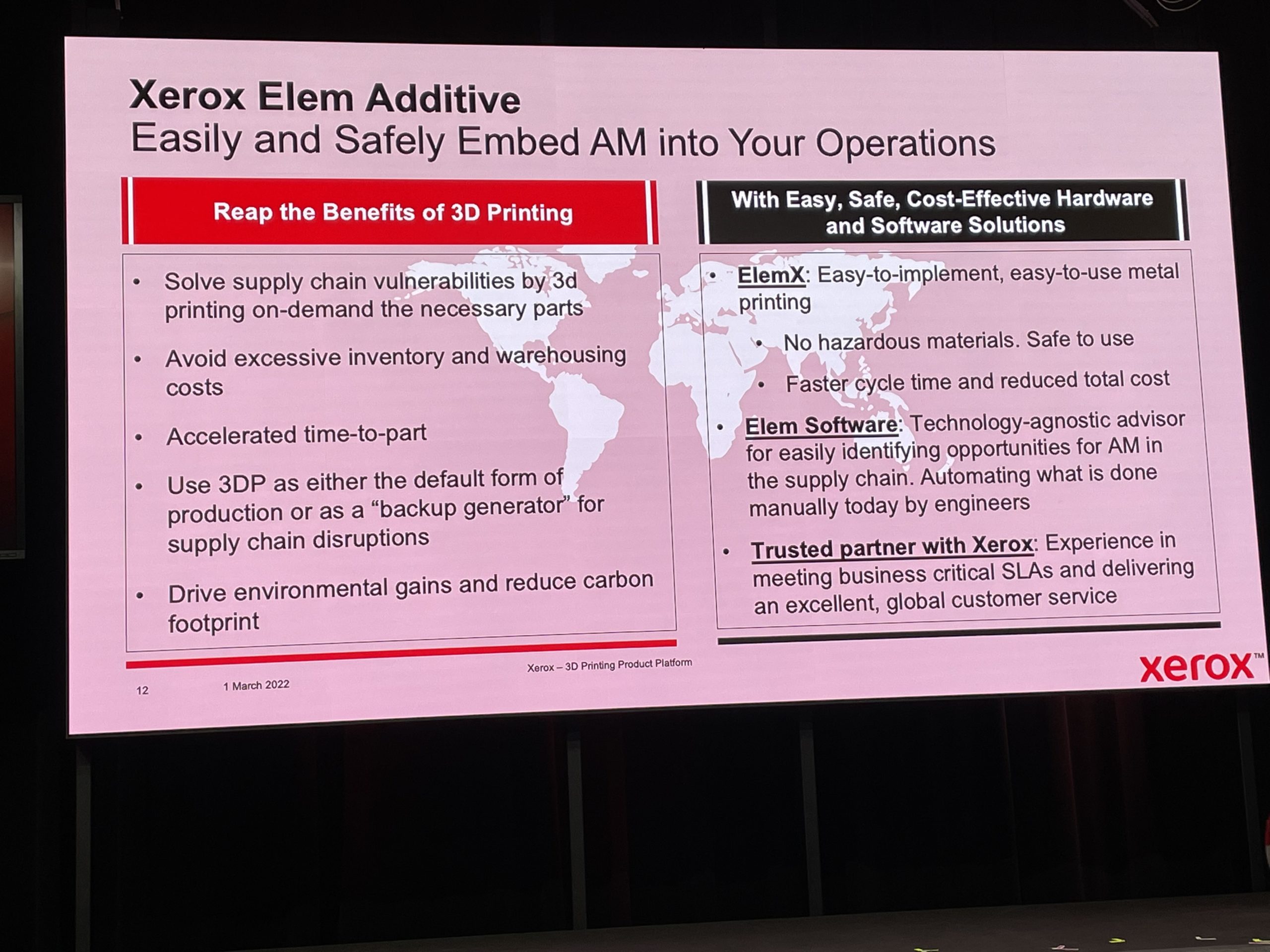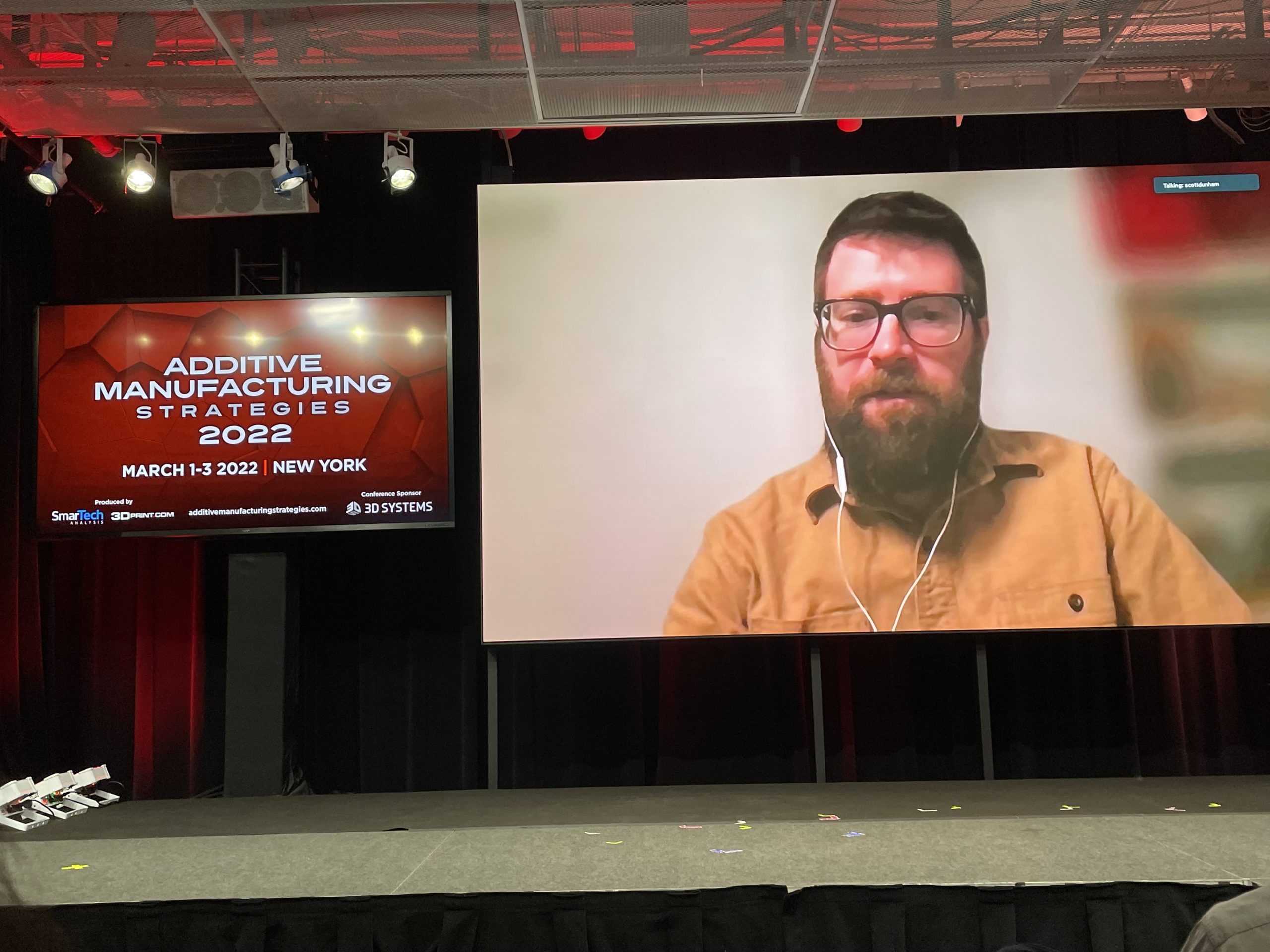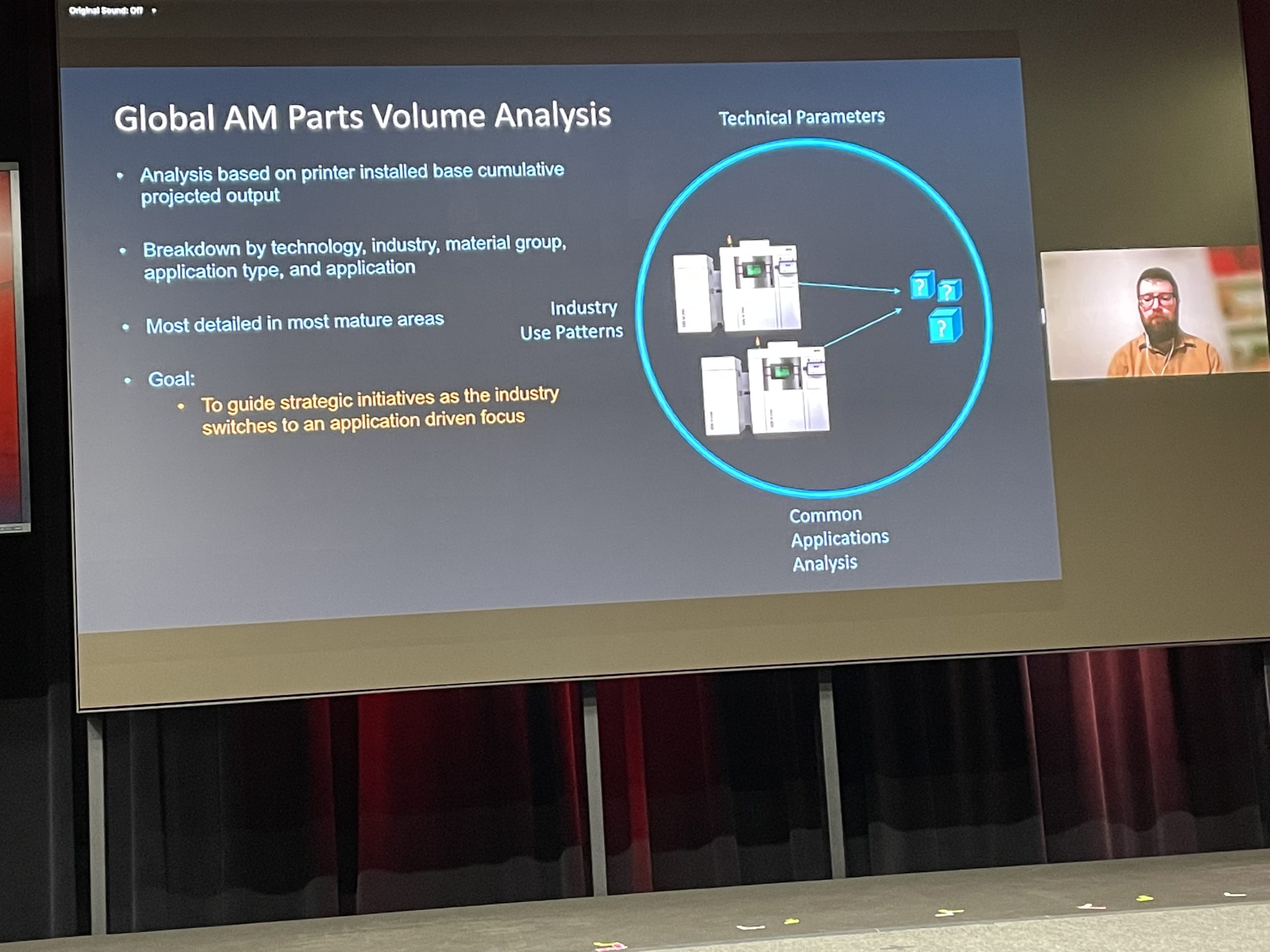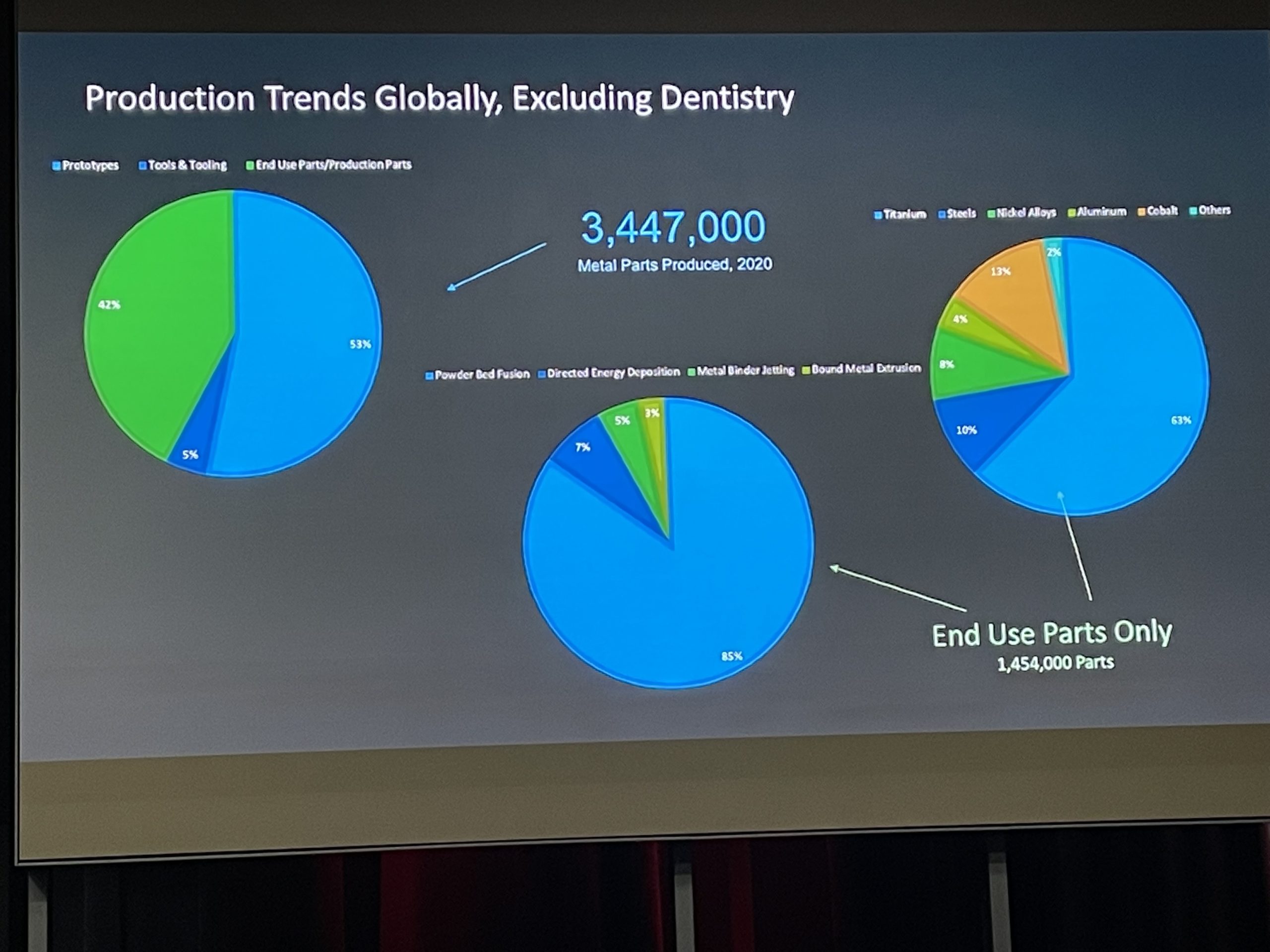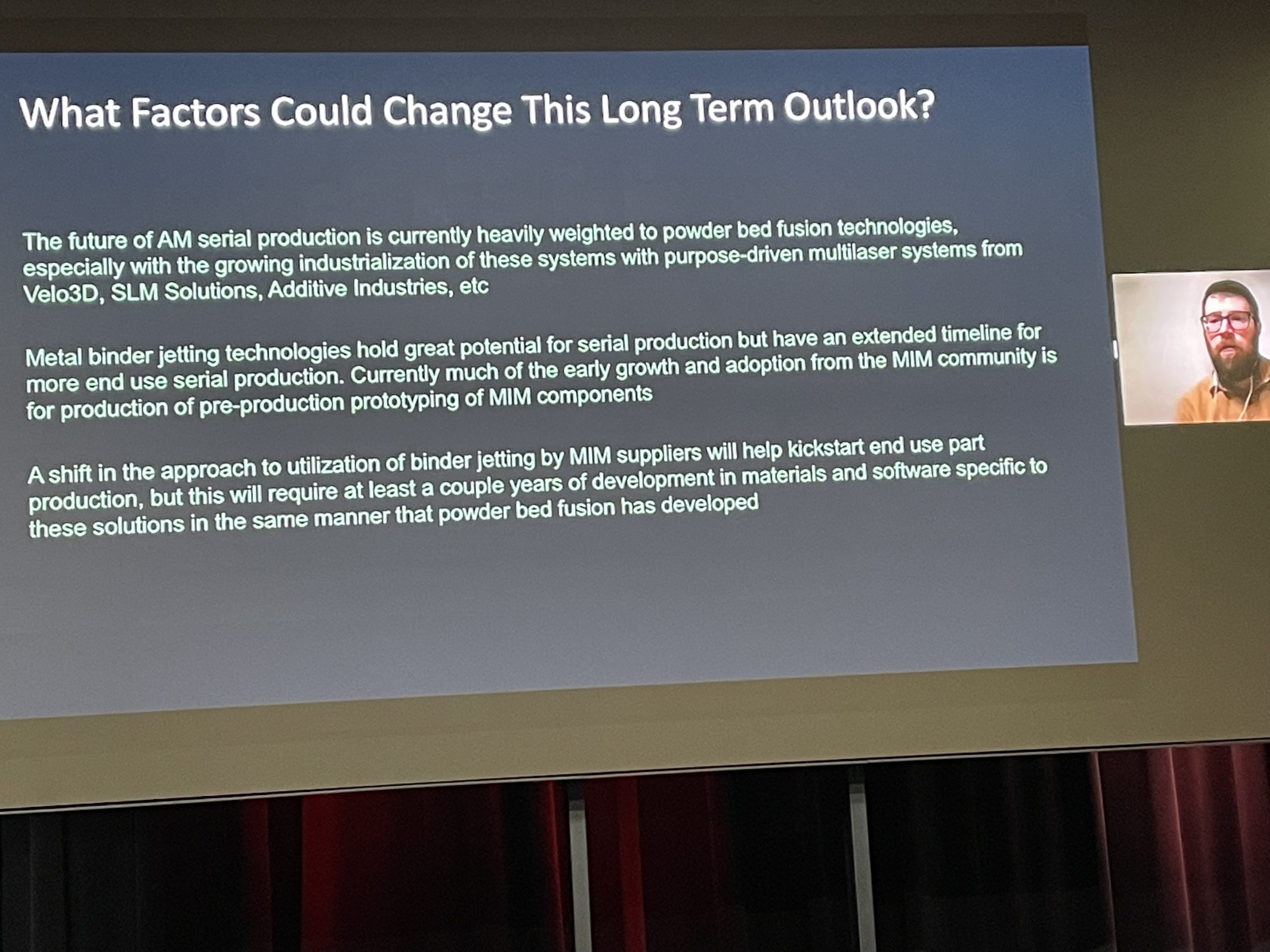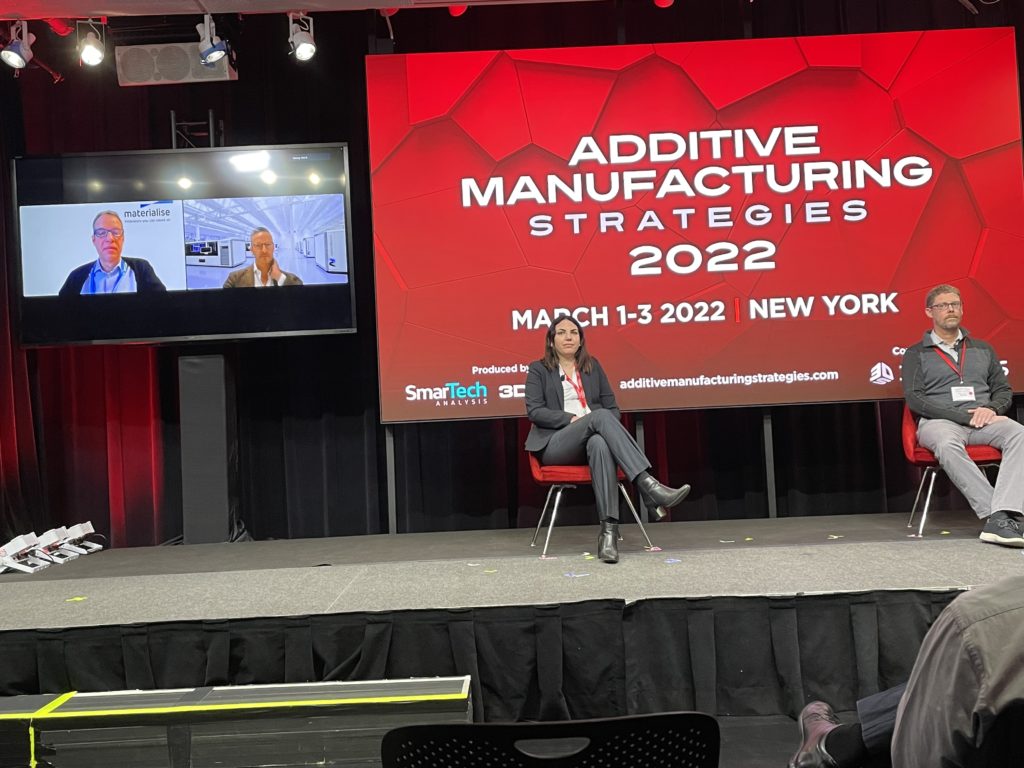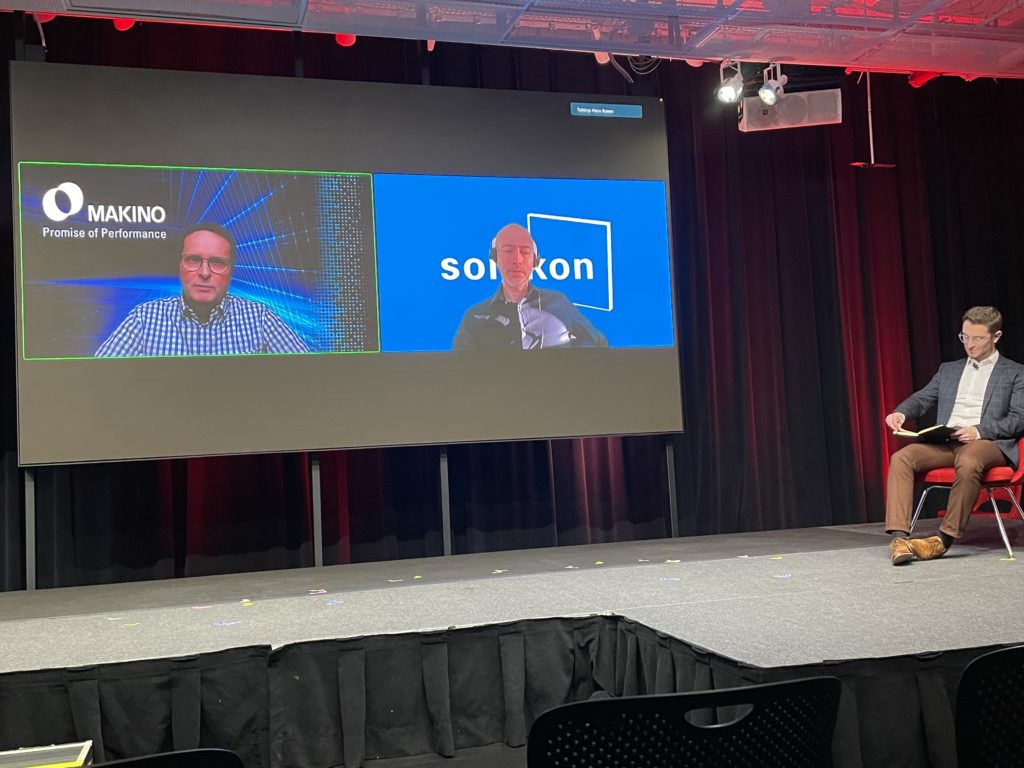Last week we held our annual Additive Manufacturing Strategies (AMS) summit, co-hosted with SmarTech Analysis, and after going virtual last year due to the pandemic, it was great to be back in-person once again. AMS 2022 was actually a hybrid event, so we had people, panelists, and speakers attending virtually as well, if they weren’t able to make it to NYC, where the event moved from Boston. This summit, hailed as the only 3D printing event in New York, focused on nine critical AM industry verticals, including bioprinting, automotive, medical and dental, and more.
The first day was all about metal additive manufacturing, and Dr. Jeff Graves, the President and CEO of AMS Diamond Sponsor 3D Systems, began with an interesting keynote presentation on “The Renaissance of Additive Manufacturing.”
“This technology has gone from lab-curious to now making full-scale production components in industrial and emerging markets,” Dr. Graves said. “The technology has become real. It’s robust, it’s ready for manufacturing. The other half is if customers will be open to it.”
He reminded us all that casting technology has been around for a long time, and that the question is why customers are suddenly willing to make that leap to additive.
“After the pandemic, every CEO in every company that wants to survive is reassessing the supply chain,” he said. “But the big thing now is young engineers.”
So combine a technology evolution with pandemic fear and a new generation of engineers embracing new technologies, and what do you get? Customers looking to make a change and adopt metal AM. Dr. Graves said, though we hardly need reminding with the applications in which our industry specializes, that change is risky.
He explained that AM technology needs to become more robust, with intelligent, self-calibrating machines that are highly automated and easy to use. Also, companies have to be able to bring in many 3D printers and put them in a factory working together. Because of how expensive it can be to implement all these changes, a flexible integration can help, as well as a software environment that will accept 3D printing. Dr. Graves said that 3D printers are becoming smarter as well, able to set themselves up, densely pack parts for production, and other tasks. So the next step is “AI in the overarching software environment.”
Dr. Graves concluded by saying that growth in important verticals like aerospace and defense, healthcare, and automotive (especially EVs) is the reason for the growth at 3D Systems. But he’s most excited for the future, and what it could bring in terms of printing real organic material and implanting them.
“It’s an incredible technology,” he said. “I believe this market will be even bigger than the markets today. It will restore a quality of life to people in need.”
AM for Series Production of Metal Parts
Xerox Elem Additive’s Topic Keynote
The keynote for this track was delivered by Tali Rosman, Vice President and General Manager of the topic sponsor Xerox Elem Additive. Rosman got her AM industry start with Stratasys ten years ago, and at the time was excited about the idea of the microfactory and its “ability to make things on-demand close to the point of consumption.”
“I think back then it was a little ahead of its time,” she said. “But everything that’s been going on in the last two years shows how much this is needed now.”
Rosman says that AM is a fantastic way to add agility to the supply chain, and that other technologies have caught up so that this can now be delivered.
“The freedom of design isn’t just about improving a part’s properties, but I look at it as an enabler to add further agility to the supply chain.”
She also noted that a lot of changes still need to happen, because environments like aerospace and defense are very conservative, and the additive manufacturing industry is “asking them to make a major leap.”
Rosman mentioned that many customers will ask AM companies if they have the exact material they’ve been using, because they’re comfortable with it. But they should be asking about the performance properties of various materials instead. Additionally, optimizing the design for AM is “critical” as well, as it can lead to a reduction of the number of parts and suppliers needed. She also said that the AM industry needs to figure out how to qualify parts in an easier way to become more agile as well.
“The only way to majorly reduce the supply chain risks is to make parts when you need them, close to the point of consumption,” Rosman said, going back to the idea of the microfactory.
Rosman brought up Xerox’s ElemX metal 3D printer, and called the system an “easy to use metal technology,” which is important for both a microfactory environment and a resilient supply chain.
She said that instead of training current engineering students to work with this complex technology, we should instead be making these systems easier to use now.
Market Forecast for AM for Series Production
Scott Dunham, Executive Vice President of Research for SmarTech Analysis, joined the conference virtually to present the research and consultancy’s Market Forecast for AM for Series Production.
“We just had our third child, which is why I’m not there in-person, so we’ve figured out series production at our house!” Dunham joked.
SmarTech is 100% focused on the AM industry, which means the firm spends a lot of time tracking the market, trying to predict where it’s headed next, and quantifying additive activity.
Dunham explained that, using Global AM Parts Volume Analysis, the trend report was looking at this from the application space, rather than machines or revenues.
These first charts show global production trends, including dentistry, and he said in 2020, about 24-25 million metal 3D printed parts were produced. In terms of functionalities, while a higher percentage of tools and tooling were 3D printed as opposed to prototypes, they’re “not as prominent as polymer ones,” and end-use production parts took the cake, or in this case the pie (thank you, I’ll be here all week).
Dunham pointed out the “overwhelming trend” of cobalt being used for production 3D printing, but it’s important to remember that these charts include the dental industry. He then showed us the same charts, but with dental being excluded, and nearly everything changed, except for the fact that powder bed fusion technology dominated.
For production trends in 2020 excluding dentistry, titanium moved into the top spot for material use, and there is a “much more balanced material and technology split.”
Dunham showed the regional distribution of metal 3D printed end use parts for healthcare and industrial applications, and again we saw the numbers with dental included (on the right) and excluded (on the left). This chart included the 2020 numbers, as well as the 2030 forecast.
He concluded by explaining that currently, powder bed fusion will control the market value of metal parts, but that this should change by 2030, as metal binder jetting is on the rise.
Technical Trends in AM Machines for Metal Series Production
An all-virtual panel on Technical Trends in AM Machines for Metal Series Production was moderated by Michael Petch, the Editor-in-chief for 3D Printing Industry, featuring panelists Ramon Pastor, HP Inc.‘s Global Head and GM of 3D Metals; Christian Lönne, the CEO of Digital Metal; Ulric Ljungblad, Freemelt CEO; and Chris Schuppe, Leader, GE Additive Engineering & Technology.
Petch asked how they would define serial production, and Lönne said instead of focusing on a single thing or part, from powder all the way to post-processing, you need to look at the whole process.
“We’ve printed 100,000 fuel nozzles on our engines, so that certainly puts a number on it to start with,” Schuppe said. “As we look at technologies advancing in laser and binder jet space, we see series production becoming 100,000 within a year and eventually within a month.”
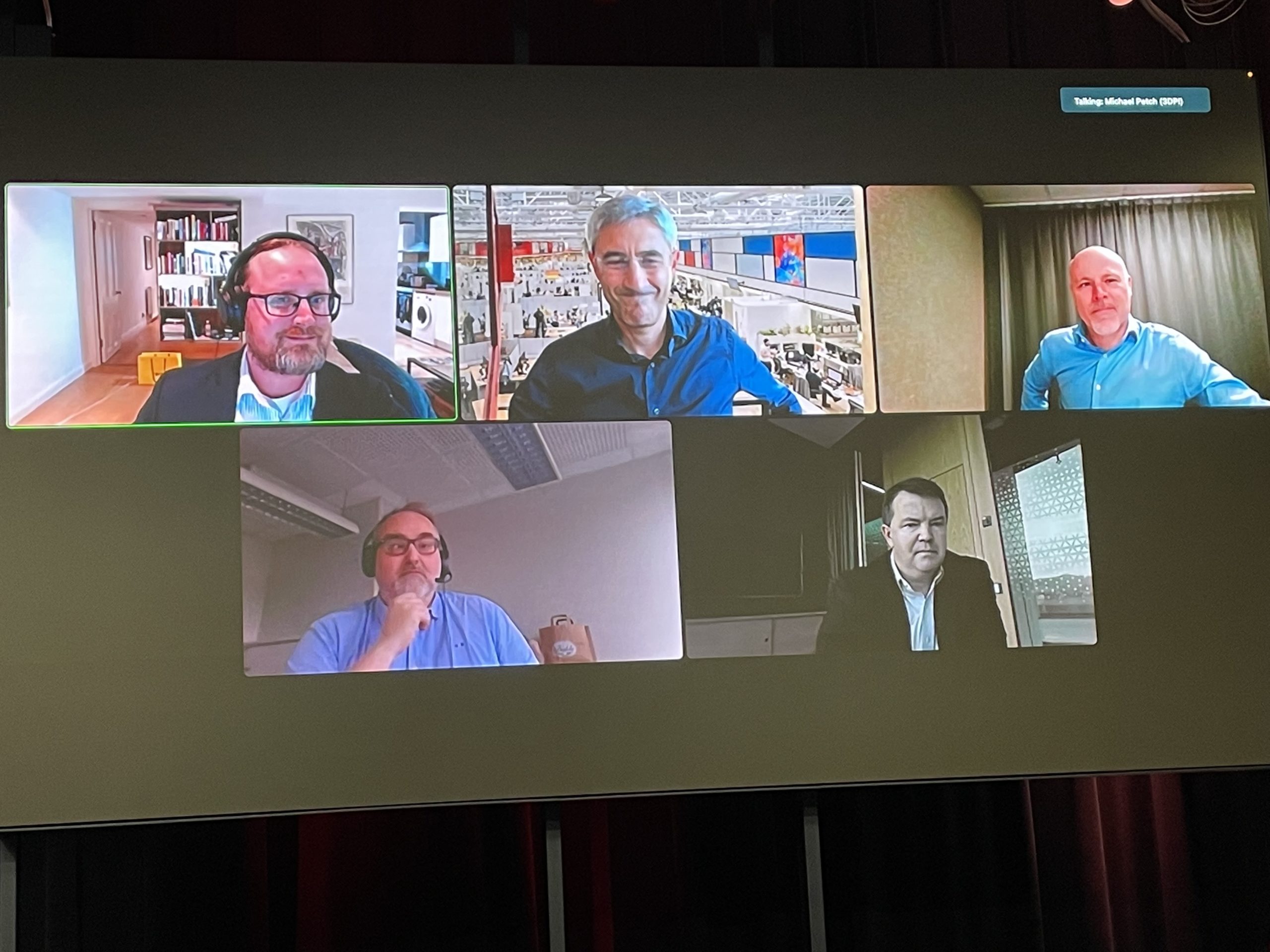
L-R (top row): Michael Petch, Ramon Pastor, Christian Lönne; (bottom row): Ulric Ljungblad and Chris Schuppe
Schuppe said that in terms of manual loading, most traditional powder bed machines are “pretty unfriendly from a powder perspective,” and that the trend is moving towards powder isolation, without many people handling it. According to Pastor, we need to ensure that “3D printing keeps the basics when it comes to mega-trends,” and Ljungblad said with powder technologies, we’re all pursuing speed and reliability, in addition to build area size.
Petch asked where hybrid systems fit into the grand scheme of things, and Lönne responded that it’s more of a “natural evolution.”
“The mental shift you need to do with additive manufacturing is you need to take that leap of faith from traditional to additive manufacturing,” he continued. “It can be comforting to have something in-between, like with a hybrid system.”
Ljungblad went the other way, saying that hybrid systems are useful in some special cases and applications, but not all. He believes the important thing is Industry 4.0, and preparing factories for series production application cases.
Petch asked about barriers to metal series production in AM, and how to address them. Pastor said that systems need to be lower-cost, faster, and more integrated, and then the focus needs to move to awareness. Lönne said some of it comes down to the “philosophical system,” with people being willing to take a “leap of faith” that there is a reliable, robust, repeatable process for metal AM.
Emerging Applications for Metal Series Production
Tyler Benster, General Partner at Asimov Ventures, moderated the next panel on Emerging Applications for Metal Series Production, featuring virtual panelists Ian Howe, the CEO of Additive Industries, and Bart Van der Schueren, Materialise CTO, in addition to in-person panelists Ted Sorom, the CEO and Co-Founder of Mantle, and keynote presenter Tali Rosman, VP and General Manager of Xerox Elem Additive. Benster began by asking what’s next for series production in metal AM.
Sorom noted that Mantle is focused on tooling, and that in terms of product development, the company is seeing “an emergence of looking at the entire supply chain.” Rosman said suppliers are seeing the importance of metal series production for existing parts, and that general manufacturing companies are adopting AM more often. Van der Schueren said there are more studies about “the value of personalization” and customized parts helping to improve the quality of life for patients post-surgery. Howe explained there is “a lot of movement in the high-tech sector,” specifically life sciences, semiconductor wafer equipment, and spare parts for industrial and nuclear gas turbines.
Benster mentioned that AM is “largely toolless,” and wondered if metal additive manufacturing was ready to “step in and take over some of these supply chain issues.” Howe and Van der Schueren both had examples to share: turbochargers for marine diesel systems and the production line for lamps, respectively. Howe said that 3D printing makes it possible to provide even better service for the supply chain, as resources can be managed “in a more sustainable fashion.”
“Ships are usually out of commission waiting for spare parts,” he said. “So with all industrial energy applications, adoption will only gain speed as management teams realize the potential.”
Van der Schueren agreed, noting that 3D printing changed the lamp production line “in an economically feasible way.”
Sorom said in the tooling space, he hasn’t spoken to a single major US company recently that’s not dealing with supply chain issues, “so there’s a major effort to bring this technology much closer to home.” Rosman agreed, explaining that the “bigger the pain point,” the more customers are ready and willing to “take a shot on additive manufacturing.”
Benster finished by asking about the final hurdles holding us back from metal additive manufacturing being everywhere. Rosman said, and it’s a point that we hear often, that lengthy post-processing is an issue, as well as the complex qualification process. Van der Schueren explained that by collecting data during the process to help develop AI tools, it will help ensure that processes are run correctly. Howe said more attention needs to be paid to “looking at the whole application from end to end.”
Post Processing for Metal Series Production
The third panel, Post Processing for Metal Series Production, was moderated by Oliver Smith, Principal Consultant and Founder of ReThink Additive, with panelists Andreas Hartmann, the CEO/CTO and Co-Founder of Solukon Maschinenbau GmbH, and Hans Kunen, Senior Specialist Advanced Manufacturing Technologies at Makino, joining us virtually. Hartmann explained that depowdering is unique in that it only exists in 3D printing, but costs, material, and time can be lost when the process is completed manually, which is why Solukon developed its automated, efficient machines. Kunen said that he observes several companies working in this space, but that more alignment is needed in order to scale.
Smith asked Hartmann what conversations he’s having with both vendors and users about why more integrated post-processing is a good idea, and he responded that the market is filled with many different applications, each with different demands, so it really depends on what the person is working on. Smith asked Kunen how he discusses post-processing integration with additive vendors, and he said that there are a lot of challenges, which is why “we need to bring it to the total process chain.” Then, Smith asked the panelists who they felt was holding up of the vision of more integrated post-processing, as there “needs to be a degree of openness around systems to integrate.”
“Most suppliers, no matter what product they’re making, want to stick to their expertise and often don’t have the time, or interest, to see the needs and the holistic production of integration,” Hartmann answered. “There are so many new things to develop, everyone is focused on their own expertise, but that is changing, more companies are working on products together, so I don’t see a stakeholder that is blocking this evolution.”
Kunen agreed, noting that many companies are open to integration, and that he doesn’t see anyone really in the way, but noted that “we do need more structured, in-depth collaboration” for this to really take off.
In my next post, I will discuss session two of the first day of the event: Industrial Metal AM.
Subscribe to Our Email Newsletter
Stay up-to-date on all the latest news from the 3D printing industry and receive information and offers from third party vendors.
You May Also Like
Further Understanding of 3D Printing Design at ADDITIV Design World
ADDITIV is back once again! This time, the virtual platform for additive manufacturing will be holding the first-ever edition of ADDITIV Design World on May 23rd from 9:00 AM –...
3D Printer Maker EVO-tech Reborn as NEVO3D — Once More With Feeling
EVO-tech was a 3D printing service and original equipment manufacturer established in 2013 and based in Schörfling am Attersee, Austria. The company produced high-quality material extrusion systems featuring linear bearings,...
3D Systems Brings 3D Printed PEEK Cranial Implant to the U.S. with FDA Clearance
For more than 10 years, 3D Systems (NYSE:DDD) has worked hand-in-hand with surgeons to plan over 150,000 patient-specific cases, and develop more than two million instruments and implants from its...
CDFAM Returns to Berlin for Second Annual Symposium
The second CDFAM Computational Design Symposium is scheduled for May 7-8, 2024, in Berlin, and will convene leading experts in computational design across all scales. Building upon the first event...


